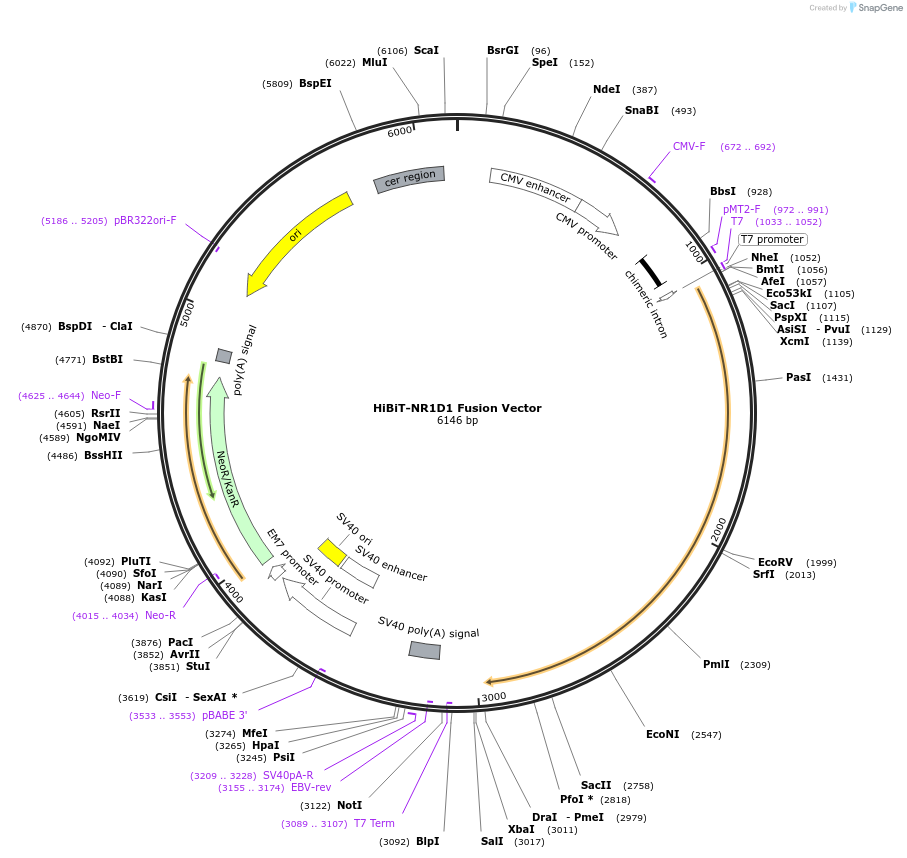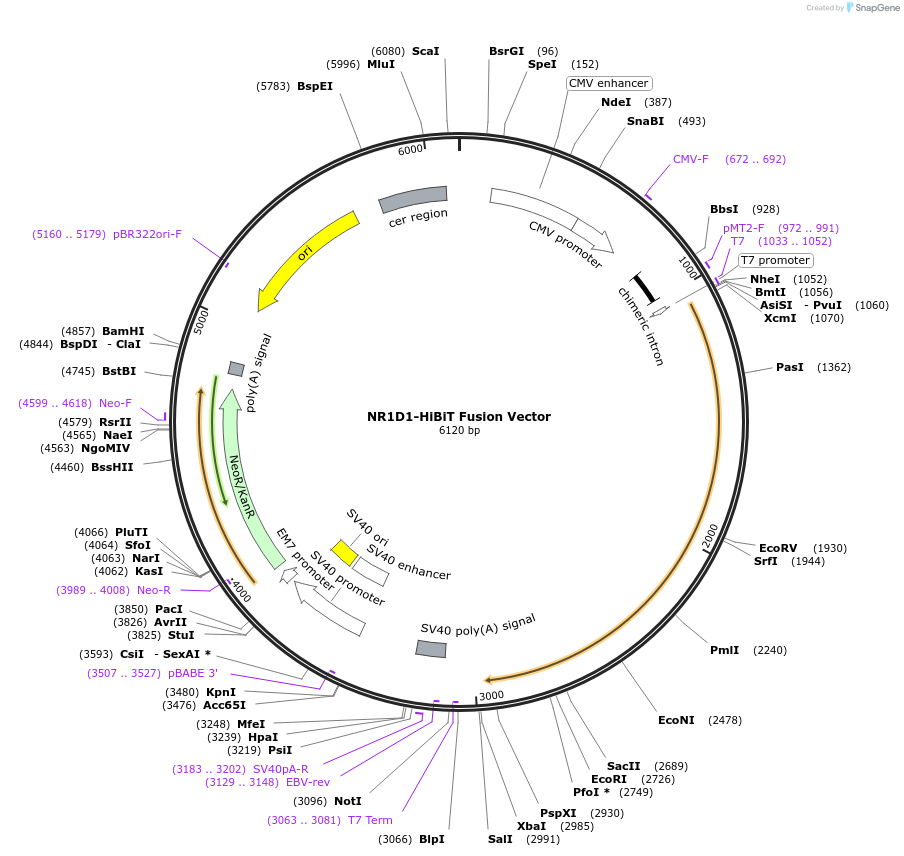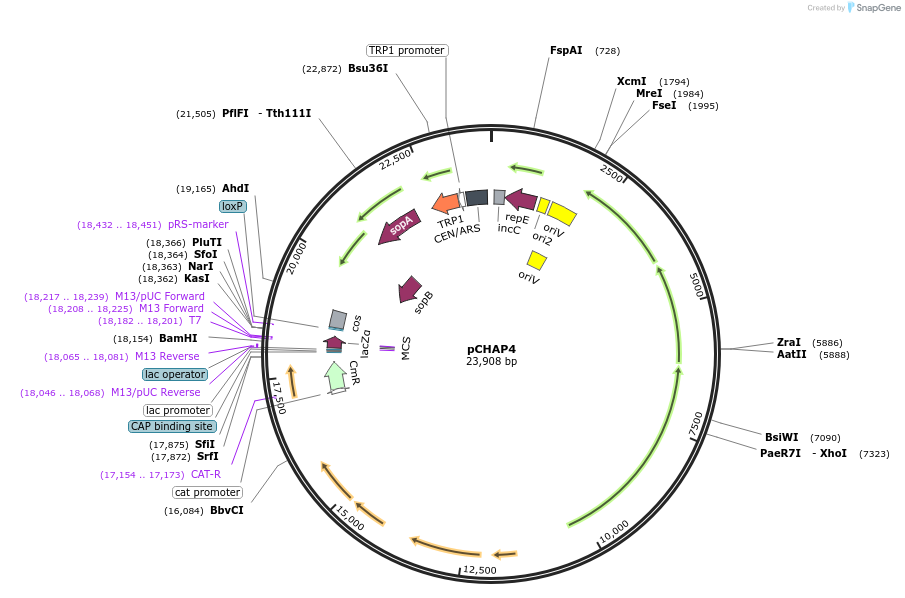We narrowed to 1,305 results for: HRAS
-
Plasmid#113073PurposePlasmid for highly efficient expression of engineered IL24 with binding affinity to cognate receptorsDepositorInsertHuman IL-24 engineered by computational design and fused with N-terminal SUMO tag (IL24 SUMO part (Brachypodium distachyon), Human)
UseTagsSUMOExpressionBacterialMutationQ60R, K62E, K68E, K77R, M80L, S88D, A89V, Q93R, Q…PromoterT7Available SinceSept. 18, 2018AvailabilityAcademic Institutions and Nonprofits only -
pSumo24P7
Plasmid#113072PurposePlasmid for highly efficient expression of engineered IL24 with mutated binding sitesDepositorInsertHuman IL-24 engineered by computational design and fused with N-terminal SUMO tag (IL24 SUMO part (Brachypodium distachyon), Human)
UseTagsSUMOExpressionBacterialMutationQ60R, K62E, K68E, K77R, M80L, S88D, A89V, Q93R, Q…PromoterT7Available SinceSept. 18, 2018AvailabilityAcademic Institutions and Nonprofits only -
pProEx H-Ras(G12C) CL
Plasmid#224261PurposeProtein purification of H-Ras (G12C)DepositorAvailable SinceSept. 18, 2024AvailabilityAcademic Institutions and Nonprofits only -
mIFP12-Farnesyl-5
Plasmid#56251PurposeLocalization: Plasma Membrane, Excitation: 683, Emission: 704DepositorInsertFarnesyl (HRAS Human)
UseTagsmIFP12ExpressionMammalianMutationencodes final 20 aa of NM_001130442.1PromoterCMVAvailable SinceApril 28, 2015AvailabilityIndustry, Academic Institutions, and Nonprofits -
pVLAD6
Plasmid#41850DepositorTypeEmpty backboneUseTagsExpressionMammalianMutationPromoterAvailable SinceFeb. 14, 2013AvailabilityAcademic Institutions and Nonprofits only -
pVLAD8L
Plasmid#41853DepositorTypeEmpty backboneUseTagsExpressionMammalianMutationPromoterAvailable SinceFeb. 14, 2013AvailabilityAcademic Institutions and Nonprofits only -
pVLAD8
Plasmid#41852DepositorTypeEmpty backboneUseTagsExpressionMammalianMutationPromoterAvailable SinceFeb. 14, 2013AvailabilityAcademic Institutions and Nonprofits only -
pVLAD6L
Plasmid#41851DepositorTypeEmpty backboneUseTagsExpressionMammalianMutationPromoterAvailable SinceFeb. 14, 2013AvailabilityAcademic Institutions and Nonprofits only -
pBTK1056
Plasmid#209546PurposeBTK Type 4 antibiotic resistance cassette for Golden Gate assemblyDepositorInsertType 4 Kanamycin resistance cassette
UseSynthetic BiologyTagsExpressionMutationPromoterAvailable SinceJan. 12, 2024AvailabilityIndustry, Academic Institutions, and Nonprofits -
HiBiT-NR1D1 Fusion Vector
Plasmid#238609PurposeExpressHiBiT-NR1D1 Fusion Protein in Mammalian Cells under a CMV promoterDepositorHas ServiceDNAInsertNR1D1 (NR1D1 Human)
UseTagsHiBiTExpressionMammalianMutationNonePromoterCMVAvailable SinceSept. 14, 2025AvailabilityIndustry, Academic Institutions, and Nonprofits -
NR1D1-HiBiT Fusion Vector
Plasmid#238610PurposeExpress NR1D1-HiBiT Fusion Protein in Mammalian Cells under a CMV promoterDepositorHas ServiceDNAInsertNR1D1 (NR1D1 Human)
UseTagsHiBiTExpressionMammalianMutationNonePromoterCMVAvailable SinceSept. 14, 2025AvailabilityIndustry, Academic Institutions, and Nonprofits -
pBTK1052
Plasmid#209542PurposeBTK Type 2 antibiotic resistance cassette for Golden Gate assemblyDepositorInsertType 2 Kanamycin resistance cassette
UseSynthetic BiologyTagsExpressionMutationPromoterAvailable SinceMay 7, 2025AvailabilityAcademic Institutions and Nonprofits only -
pBTK1053
Plasmid#209543PurposeBTK Type 3-4 fluorescent protein cassette for Golden Gate assemblyDepositorInsertType 3-4 E2-Crimson cassette
UseSynthetic BiologyTagsExpressionMutationPromoterCP25Available SinceApril 30, 2025AvailabilityAcademic Institutions and Nonprofits only -
MSCV.IRES.hCD4
Plasmid#35712DepositorInsertsIRES
hCD4
UseRetroviralTagsExpressionMammalianMutationPromoterAvailable SinceApril 19, 2012AvailabilityAcademic Institutions and Nonprofits only -
pSAP
Plasmid#206429PurposeA vector backbone domesticated for SapI (pCC1BAC-based), contains elements for selection, maintenance, and propagation in S. cerevisiae (TRP1) and E. coli (cat).DepositorTypeEmpty backboneUseTagsExpressionBacterial and YeastMutationPromoterAvailable SinceJan. 19, 2024AvailabilityAcademic Institutions and Nonprofits only -
pBTK1050
Plasmid#209540PurposeBTK Type 1 homology arm for Golden Gate assemblyDepositorInsertUpstream homology arm for recombination into the S. alvi wkB2 genome w/in the SALWKB2_RS11215/SALWKB2_RS11220 intergenic region
UseSynthetic BiologyTagsExpressionMutationPromoterAvailable SinceFeb. 9, 2024AvailabilityIndustry, Academic Institutions, and Nonprofits -
pBTK1051
Plasmid#209541PurposeBTK Type 5 homology arm for Golden Gate assemblyDepositorInsertRecombination into the S. alvi wkB2 genome within the SALWKB2_RS11215/SALWKB2_RS11220 intergenic region
UseSynthetic BiologyTagsExpressionMutationPromoterAvailable SinceFeb. 2, 2024AvailabilityIndustry, Academic Institutions, and Nonprofits -
pCHAP3_Sap
Plasmid#206849PurposeA plasmid containing a 17,271 bp fragment of the P. tricornutum chloroplast genome. The yeast marker URA3 was domesticated for SapI and integrated into the chloroplast fragment.DepositorTypeEmpty backboneUseTagsExpressionBacterial and YeastMutationPromoterAvailable SinceJan. 23, 2024AvailabilityAcademic Institutions and Nonprofits only -
pCHAP4
Plasmid#206850PurposeA plasmid containing a 16,121 bp fragment of the P. tricornutum chloroplast genome. The fragment is flanked by SapI recognition sites, allowing it to be released from the cloning vector.DepositorTypeEmpty backboneUseTagsExpressionBacterial and YeastMutationPromoterAvailable SinceFeb. 14, 2024AvailabilityAcademic Institutions and Nonprofits only -
pPt_Cp
Plasmid#206855PurposeA plasmid containing the whole P. tricornutum chloroplast genome, cloned with a pCC1BAC-based backbone. The marker URA3 was integrated into the genome.DepositorTypeEmpty backboneUseTagsExpressionBacterial and YeastMutationPromoterAvailable SinceFeb. 14, 2024AvailabilityAcademic Institutions and Nonprofits only


















